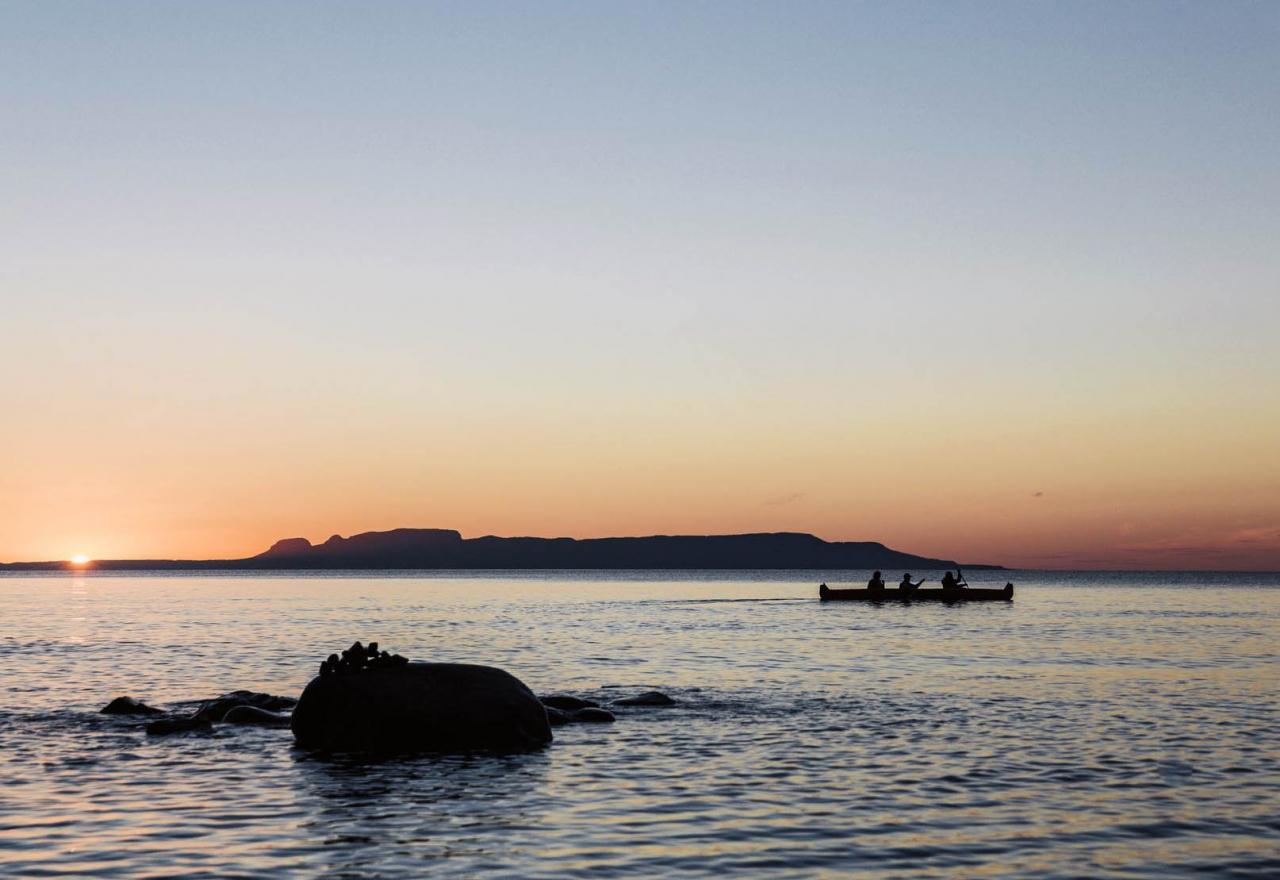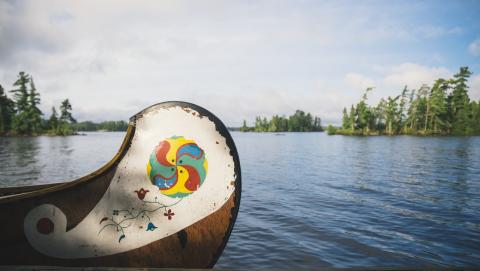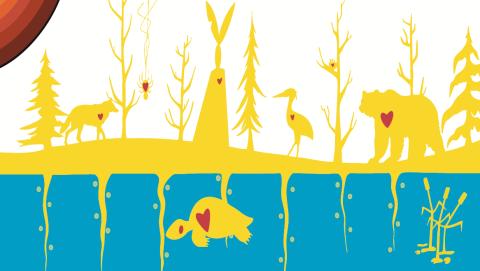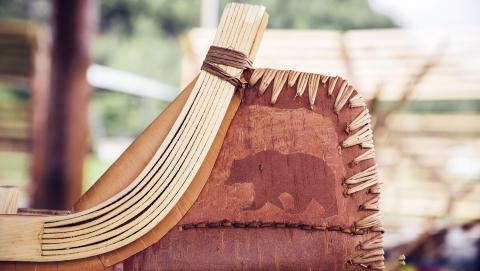
Treaties Recognition Week - November 5 - 11
The first full week of November marks Treaties Recognition Week to recognize the importance of treaties and increase awareness of the treaty relationships between Indigenous and non-Indigenous communities in Ontario.
What is Treaties Recognition Week?
The Ontario government designated the first week of November as Treaties Recognition Week in 2016 to honour the importance of treaties, to help Ontarians learn more about treaty rights and treaty relationships and to increase awareness of the treaty relationships between Indigenous and non-Indigenous communities in Ontario.
Treaties Recognition Week takes place this year from November 5 to 11, 2021.
What Are Treaties?
Treaties provide a framework between Nations for living together and sharing the land traditionally occupied by Indigenous peoples.
Initially, treaties between the British or the French and the Indigenous populations were peaceable agreements that represented mutual understanding, sharing, trading or aid. Later, treaties were signed that surrendered land to the Crown, however, the Indigenous people really did not understand that land was being “given” away due to language barriers and misinterpretations and as well, the concept of land “ownership” was culturally unknown to Indigenous people. By the time of Canadian Confederation in 1867 most of Ontario had been ceded by a treaty. That said, modern treaties are still in the process of being negotiated in the province.
At the time of Canadian Confederation in 1867, only a fraction of Ontario had not been ceded by a treaty. Today in Canada there are approximately 70 treaties between 371 First Nations and the Crown. The treaties represent the rights of more than 500,000 Indigenous people. Ontario is covered by 46 historic and present-day treaties, which were signed between 1781 and 1930.
Although most treaties were signed more than a century ago, these agreements provide the foundation for ongoing co-operation and partnership between Indigenous + non-Indigenous people.
Why is Treaty Week Important?
It’s important for all Ontarians to understand the role treaties play in our lives and relationships with each other today as we move forward together to advance reconciliation.
By building understanding, we are advancing reconciliation with Indigenous people to help create equitable and respectful relationships to enable a better future for all Ontarians.
Additional Resources for Treaties Recognition Week
AMO Indigenous Relations resources
Ontario.ca/treaties (The Province’s informative website about Treaties in Ontario)
Treaties in Ontario Infographic (PDF showing treaties in Ontario)
Indigenous Voices on Treaties (Video series about Treaties in Ontario).
We Are All Treaty People free online course and resources from the University of Toronto
Truth and Reconciliation Commission
The Truth and Reconciliation Commission of Canada: Calls to Action
Resources:
- Anishinabek Nation
- Ontario Federation of Indigenous Friendship Centres (OFIFC)
- Ontario Government Treaties
- Videos: Indigenous voices on treaties
Academic Books
- Asch, Michael. On Being Here to Stay: Treaties and Aboriginal Rights in Canada. Toronto: University of Toronto Press, 2014.
- Blair, Peggy. Lament for a First Nation: The Williams Treaties of Southern Ontario. Vancouver: University of British Columbia Press, 2008.
- Bohaker, Heidi. Doodem and Council Fire: Anishinaabe Governance Through Alliance. Toronto: University of Toronto Press, 2020.
- Borrows, John and Michael Coyle, eds. The Right Relationship: Reimagining the Implementation of Historical Treaties. Toronto: University of Toronto Press, 2017
- Calverley, David. Who Controls the Hunt? First Nations, Treaty Rights, and Wildlife Conservation in Ontario, 1783-1939. Vancouver: University of British Columbia Press, 2018.
- Fenge, Terry and Jim Aldrige, eds. Keeping Promises: The Royal Proclamation of 1763, Aboriginal Rights, and Treaties in Canada. Montreal: McGill-Queen’s University Press, 2015.
- Long, John S. Treaty No.9: Making the Agreement to Share the Land in Far Northern Ontario in 1905. Montreal: McGill-Queen’s University Press, 2010.
- Luby, Brittany. Dammed: The Politics of Loss and Survival in Anishinaabe Territory. Winnipeg: University of Manitoba Press, 2020.
- Macklem, Patrick and Douglas Sanderson, eds. From Recognition to Reconciliation: Essays on the Constitutional Entrenchment of Aboriginal and Treaty Rights. Toronto: University of Toronto Press, 2015.
- McCabe, J. Timothy S. The Law of Treaties Between the Crown and Aboriginal Peoples. Markham: Lexis Nexis Canada Inc., 2010.
- Miller, J.R. Compact, Contract, Covenant: Aboriginal Treaty-Making in Canada. Toronto: University of Toronto Press, 2009.
- Morin, Jean-Pierre. Solemn Words and Foundational Documents: An Annotated Discussion of Indigenous-Crown Treaties in Canada, 1752-1923. Toronto: University of Toronto Press, 2018.
- Poetzer, Greg and Ken S. Coates. From Treaty Peoples to Treaty Nation: A Road Map for All Canadians. Vancouver: UBC Press, 2016.
- Rogers, Edward S. and Donald B. Smith, eds. Aboriginal Ontario: Historical Perspectives on First Nations. Toronto: Dundurn Press, 1994.
- Switzer, Maurice. Nation to Nation, A Resource on Treaties in Ontario. North Bay: Union of Ontario Indians, 2013.
- Tidridge, Nathan. The Queen at the Council Fire: The Treaty of Niagara, Reconciliation, and the Dignified Crown in Canada. Toronto: Dundurn Press, 2015.
- Source: Ontario Government



